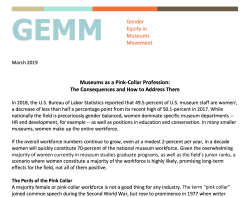Intent vs. Impact
Posted: September 4, 2017 Filed under: Communication, Diversity, Leadership, Learning Organizations, Museum, museum staff, Nonprofit Leadership, Self-Aware, Workplace Bias | Tags: equality, history museum, Leadership, museums, nonprofit, soft skills, transparency Leave a comment
We begin this week’s post with a note of hope and encouragement for our friends and colleagues at museums and heritage organizations in and around Houston, Texas. Museum leadership can be challenging in the best of times, but this disaster surely tested all of you. Our thoughts and prayers are with you, your families, and the organizations and collections you serve and protect. And for our readers, know that both AAM and AASLH have disaster advice on their web pages. In addition, AASLH is actively collecting for storm relief online and at its annual meeting that begins Wednesday. Last, if you haven’t reviewed your site disaster plan recently, now might be a good time. If there ever were a metaphor for what leaders do, it’s a disaster plan. Leaders always need to be prepared for whatever comes next.
****
This week my organization spent time discussing issues of gender in order to prepare the community to support transgender and gender non-conforming students. We were lucky enough to have Mb Duckett Ireland, Choate School’s Diversity Education Chair speak to us. Late in the talk Mb dropped a line about intention versus impact. It stuck with me, and I thought about it the rest of the week.
There are so many moments when leaders intend one thing, and the result is the opposite. If you asked me to sum up everything I’ve read about intention vs. impact since Mb’s talk, it would be: It’s not about you; it’s about the person you’re talking to.
Too often we assume that positions of leadership automatically confer brains, kindness and respect. Sadly, as all of us who’ve worked for lousy leaders know, there’s nothing automatic about it. But back to intent vs. impact. Imagine, you are a museum leader, and you make a comment to a staff member. You mean it in a jovial, friendly way, but as soon as the words are out of your mouth, you realize something’s happening. And it’s not good. What do you do? Well, too often we retreat, we try to pretend whatever happened didn’t happen and move through the rest of the day. And if we’re confronted with what happened, we rarely sit right down in the space that makes us uncomfortable and say, holy smokes I was rude. We don’t engage because it’s uncomfortable to say “I messed up,” and because we’re afraid of making a bad situation worse.
One of the things the privileged (and all of us who are leaders, and therefore deciders occupy a place of privilege to a greater or lesser degree) don’t seem to realize is that tiny comments, assumptions, jokes and judgments aggregate. And it really doesn’t matter if you were “just trying to be funny” if on the receiving end it’s not funny but hurtful. Your intentions may be good, but your impact biased. And it’s your impact that packs a punch especially when later instead of apologizing you try to explain you’re not a misogynist or a racist or both.
As leaders we not only provide the vision and roadmap for our organizations, we model a way of being. Acknowledging that staff members have different identities, and working to create equitable workspaces is something all museum leaders need to do. We all mess up occasionally. When that happens do what needs to be done: Admit your mistake; connect with the person you’ve hurt or offended; reach out. You’ll find you build a team not a hierarchy.
Joan Baldwin









